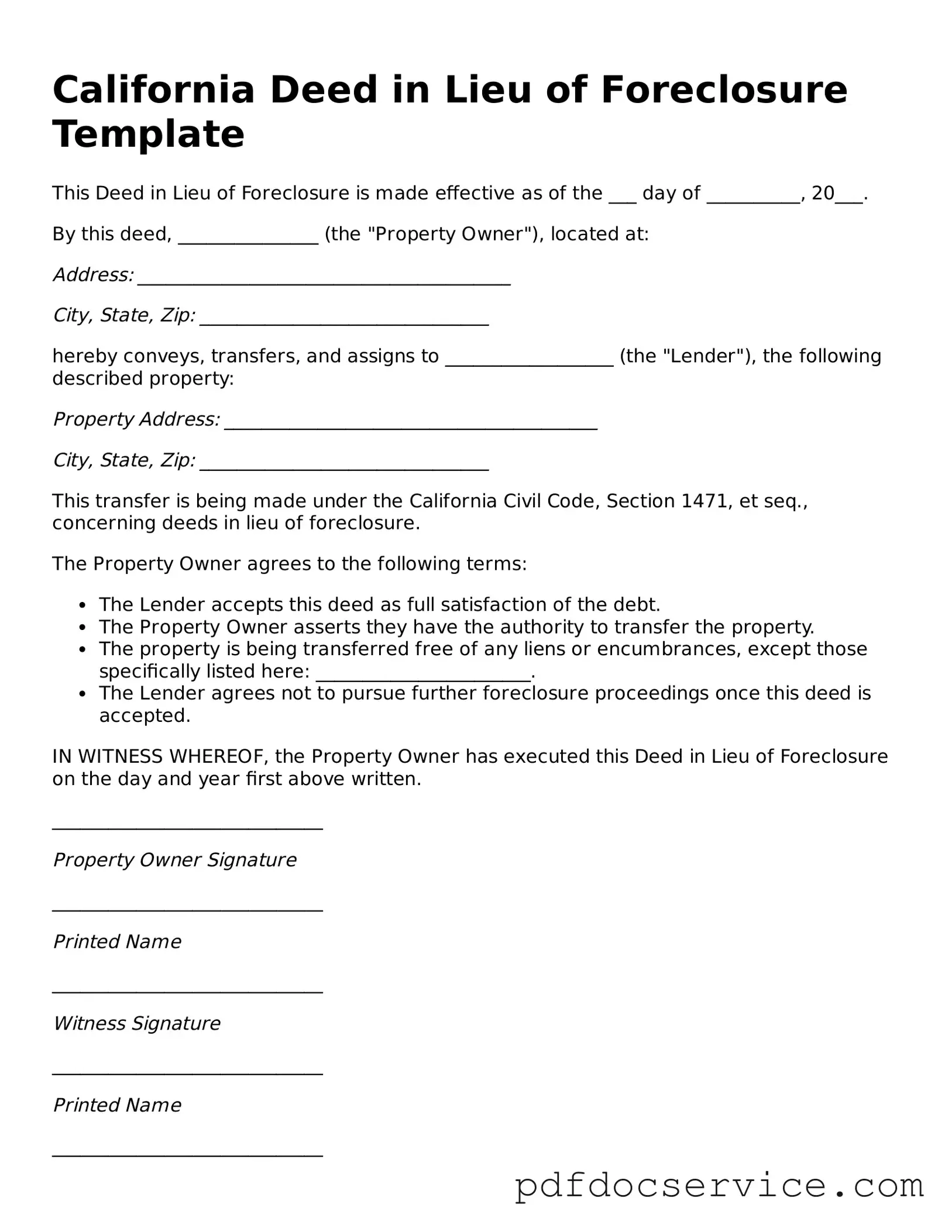Printable Deed in Lieu of Foreclosure Template for California
A California Deed in Lieu of Foreclosure is a legal document that allows a homeowner to transfer their property title back to the lender to avoid the lengthy foreclosure process. This option can provide a more amicable resolution for both parties involved, as it often results in less financial strain and a quicker transition for the homeowner. Understanding the implications and benefits of this form is essential for anyone facing financial difficulties related to their mortgage.
Open Deed in Lieu of Foreclosure Editor
